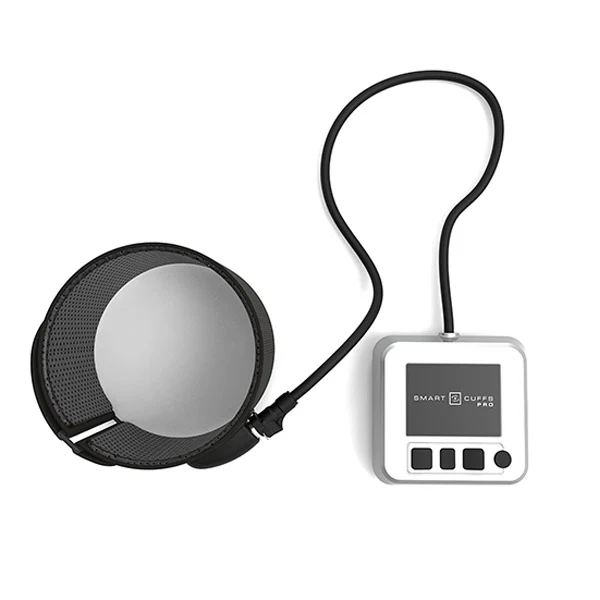
If you’ve had Achilles tendon surgery, you already know that recovery isn’t just about healing—it’s about rebuilding strength without re-injury. But how do you get stronger without putting too much stress on a healing tendon?
At Pain & Performance Coach in Hillsboro, we use Blood Flow Restriction Therapy (BFRT) to help patients throughout Beaverton, Aloha, and the greater Portland area regain strength safely and efficiently.
Let’s explore how this powerful tool works and the key milestones we track to guide your recovery.
📌Disclaimer: this is for educational purposes only and should not be viewed as medical advice
🩸 What Is Blood Flow Restriction Therapy?
BFRT uses a specialized cuff (similar to a blood pressure cuff) that lightly restricts blood flow to your leg during exercise. When applied properly, this method:
✔️ Stimulates muscle growth with very low resistance
✔️ Promotes healing by improving tendon loading
✔️ Reduces muscle loss during immobilization
✔️ Shortens time needed to regain strength after surgery
It’s like telling your muscles they’re lifting heavy weights—without actually doing it.
🚶 Phase 1: BFR in the Protection Phase (0–2 weeks post-op)
🔹 Goal: Prevent muscle loss and start early activation
🔹 Use: Seated or lying exercises for the hip and thigh
🔹 Intensity: Light movements, very low resistance
🧠 We use BFRT here to:
-
- Maintain strength in quads, glutes, and hamstrings
-
- Improve circulation and reduce swelling
-
- Avoid stressing the healing Achilles
✅ Milestones to move forward:
-
- Surgical wound healed and cleared by your doctor
-
- Able to perform hip and knee exercises pain-free
-
- Minimal swelling and no calf cramping during BFRT
-
- Comfortable wearing the cuff during light sessions
🦵 Phase 2: BFR in Early Mobility Phase (2–6 weeks)
🔹 Goal: Begin gentle calf and lower leg activation
🔹 Use: Seated calf isometrics and basic ankle range of motion
🔹 Intensity: Low-load isometrics and partial range resistance
This is the phase where the tendon needs gentle tension, not aggressive stretching. BFRT allows us to safely wake up the calf muscles without overloading the Achilles.
✅ Milestones to move forward:
-
- Tolerating BFRT with controlled ankle exercises
-
- Able to ambulate in boot with increasing weight (50% → 100%)
-
- Heel lifts in place and maintained during gait
-
- Calf muscle activation visible or measurable (even if weak)
🏋️ Phase 3: BFR for Strength Development (6–12 weeks)
🔹 Goal: Restore calf and full leg strength
🔹 Use: Seated heel raises, straight leg raises with load, step-ups
🔹 Intensity: Moderate effort with progressive load increases
At this point, your muscles are ready to work harder—but your tendon still isn’t ready for full load. BFR bridges that gap by simulating heavy training effects safely.
🛠️ BFRT becomes a core part of your weekly rehab in this phase.
✅ Milestones to move forward:
-
- Full weight bearing in a shoe or boot without pain
-
- Double-leg heel raises with minimal asymmetry
-
- Improved ankle range of motion (still avoiding passive stretching)
-
- Able to tolerate longer BFRT sessions (15–20 minutes) with effort
🔄 Phase 4: BFR as an Adjunct During Late Rehab (12–24+ weeks)
🔹 Goal: Enhance recovery and muscle endurance
🔹 Use: Add BFRT to deload sessions or recovery workouts
🔹 Intensity: Mixed—light days to supplement heavy training
By this phase, you’re returning to jumping, running, or sport-specific drills. We often reintroduce BFRT during recovery days, helping maintain progress while preventing overload.
✅ Milestones for full clearance:
-
- 10+ single-leg heel raises with good quality
-
- Jump or jog tolerance without pain or swelling
-
- Isometric plantar flexion strength = 1.5–2x body weight
-
- 90%+ strength symmetry between injured and non-injured side
🧠 Why BFRT Is a Game Changer
✔️ Faster strength recovery than traditional rehab alone
✔️ Less strain on joints and tendons during early healing
✔️ Flexible tool for athletes, older adults, and active individuals
✔️ Proven to reduce atrophy in the weeks you’re in a boot
BFRT is backed by clinical research and is becoming a gold standard in post-surgical rehab for injuries like Achilles ruptures and ACL tears.
🏡 Local Experts in Achilles Rehab + BFRT
Our team at Pain & Performance Coach in Hillsboro works closely with your surgeon and uses research-backed techniques to guide your recovery.
If you live in Beaverton, Hillsboro, Aloha, Forest Grove, or Portland, you can trust us to provide:
✅ Safe, expert-guided blood flow restriction therapy
✅ Customized strength and return-to-sport plans
✅ Functional testing to measure every milestone
📌Disclaimer: this is for educational purposes only and should not be viewed as medical advice
📞 Ready to try BFRT as part of your Achilles recovery plan?
Book a consult today and let’s rebuild your strength—safely and efficiently.
